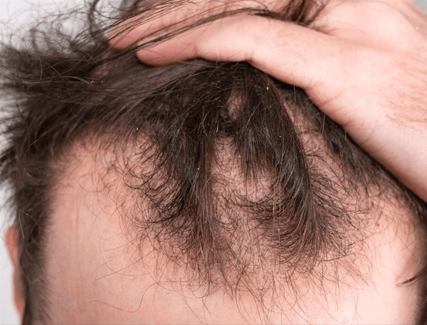Exploring the Eco-Footprint of Clear Aligners and the Steps Toward Greener Orthodontics
Clear aligners like Invisalign have transformed orthodontic care, offering a discreet and comfortable alternative to traditional metal braces. But as their popularity grows, so do concerns about their environmental footprint. With millions of plastic aligners manufactured annually, what is the true impact on the environment—and how are companies addressing it?
In this article, we’ll take a closer look at the environmental impact of Invisalign and other clear aligners, while highlighting how manufacturers are moving toward more sustainable practices.
🌍 The Environmental Footprint of Clear Aligners
1. Plastic Waste from Aligner Production
Each Invisalign patient typically goes through 20–50+ sets of aligners during treatment. Multiply that by millions of users worldwide, and you get:
- Tons of medical-grade plastic waste every year
- Aligners that are not recyclable through standard municipal programs
- Used trays often ending up in landfills or incineration
Though aligners are made from medical-grade, BPA-free thermoplastic, they are single-use and must be replaced every 1–2 weeks. While necessary for effective treatment, this does raise valid concerns about long-term plastic accumulation.
2. Carbon Emissions from Manufacturing & Shipping
- Aligner production involves 3D printing and thermoforming, both of which require significant energy.
- Shipping individual trays globally (often over long distances) contributes to the product’s carbon footprint.
- Frequent dental visits for adjustments and progress tracking (though decreasing with remote monitoring) also play a role.
3. Packaging Waste
Every aligner set is typically packaged in individual plastic sleeves or boxes. Over the course of treatment, this results in additional packaging waste.
✅ How Invisalign and Other Companies Are Working Toward Sustainability
Align Technology (Invisalign’s parent company) and other clear aligner manufacturers are increasingly aware of their environmental responsibilities. Here’s how they’re improving:
♻️ 1. Recycling & Take-Back Programs
While clear aligners are not recyclable through standard curbside programs, some companies are piloting or supporting specialized recycling partnerships.
- Invisalign Recycling Pilot: In select regions, Invisalign has launched pilot programs allowing patients to return used trays for responsible disposal or recycling through certified channels.
- Third-party partnerships: Some orthodontic clinics partner with Terracycle or other programs that accept hard-to-recycle plastics (including dental products).
These initiatives are small but growing, helping divert waste from landfills.
🌱 2. Reducing Packaging Waste
Invisalign has made changes to minimize packaging materials and switch to more sustainable options:
- Recyclable paperboard packaging replaces plastic in many regions.
- Aligners are now delivered in bulk shipment boxes to reduce materials and transportation emissions.
Some smaller aligner companies are also exploring biodegradable packaging alternatives.
⚡ 3. Energy-Efficient Manufacturing
Align Technology operates advanced manufacturing plants in the U.S., Mexico, and elsewhere. These facilities are:
- Implementing energy conservation systems
- Using low-emission machinery
- Transitioning toward renewable energy sources where available
The company has reported ongoing efforts to reduce its carbon footprint per unit produced, and future goals include carbon neutrality for major facilities.
🌐 4. Digital Workflows = Less Waste
The digital nature of clear aligner treatment already offers eco-friendly advantages:
- 3D intraoral scanning replaces physical molds, reducing silicone and plaster waste.
- Virtual treatment plans and simulations cut down on paper usage.
- Remote monitoring apps (like DentalMonitoring) reduce unnecessary travel, lowering fuel consumption and emissions.
These innovations help create a paperless, travel-reduced treatment experience—especially appealing to environmentally conscious patients.
📊 5. Corporate Sustainability Commitments
Align Technology has published Environmental, Social, and Governance (ESG) reports outlining their commitment to:
- Reducing waste
- Investing in sustainable materials research
- Ethical sourcing of production materials
- Transparency and accountability in manufacturing
Other competitors in the aligner space, such as Byte and SmileDirectClub, have also started releasing sustainability pledges and exploring green shipping practices and carbon offset programs.
🧪 What’s Next? Future Trends in Sustainable Orthodontics
The future of eco-conscious clear aligners may include:
🔬 Biodegradable Aligner Materials
Researchers are exploring plant-based and compostable polymers that could serve as future alternatives to traditional thermoplastics.
🏭 Localized Manufacturing
Aligner companies may invest in regional 3D printing hubs to reduce global shipping needs and emissions.
🎯 Circular Economy Models
Imagine a system where used aligners can be collected, sterilized, and repurposed into new dental products—a truly circular system that reduces raw material usage.
✅ What Can Patients Do?
As a clear aligner user, you can take small steps to reduce your treatment’s environmental impact:
- Return used aligners if your provider has a take-back program.
- Ask your orthodontist about eco-conscious options or recycling programs.
- Choose digital scans over traditional molds.
- Use a reusable aligner case and minimize single-use products during treatment.
- Dispose of packaging materials responsibly.
💡 Final Thoughts
While clear aligners do have an environmental impact—mainly in plastic waste and manufacturing emissions—the industry is actively evolving toward more sustainable solutions. Innovations in material science, digital workflows, and responsible manufacturing are helping to reshape the orthodontic landscape into a greener, more conscious future.




